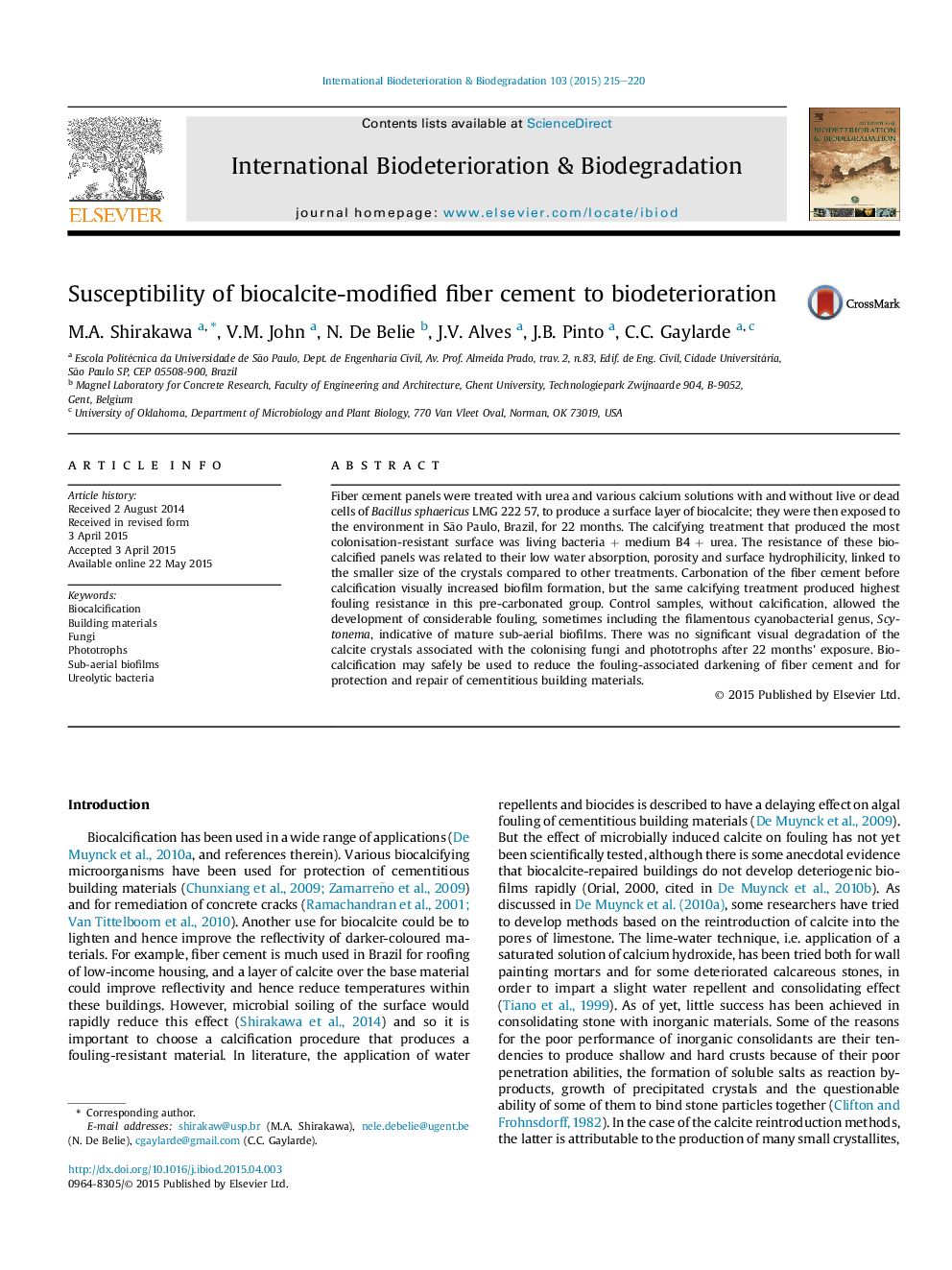| Article ID | Journal | Published Year | Pages | File Type |
|---|---|---|---|---|
| 4364422 | International Biodeterioration & Biodegradation | 2015 | 6 Pages |
•There is no published evidence on biodeterioration potential for biocalcite.•Fiber cement was biocalcified by various methods.•Biocalcification with Bacillus sphaericus, medium B4 and urea allowed least biofouling.•This was due to small calcite crystals, low sorptivity, porosity and hydrophilicity.•Calcite crystals were not degraded around the biofilm within 22 months.
Fiber cement panels were treated with urea and various calcium solutions with and without live or dead cells of Bacillus sphaericus LMG 222 57, to produce a surface layer of biocalcite; they were then exposed to the environment in São Paulo, Brazil, for 22 months. The calcifying treatment that produced the most colonisation-resistant surface was living bacteria + medium B4 + urea. The resistance of these biocalcified panels was related to their low water absorption, porosity and surface hydrophilicity, linked to the smaller size of the crystals compared to other treatments. Carbonation of the fiber cement before calcification visually increased biofilm formation, but the same calcifying treatment produced highest fouling resistance in this pre-carbonated group. Control samples, without calcification, allowed the development of considerable fouling, sometimes including the filamentous cyanobacterial genus, Scytonema, indicative of mature sub-aerial biofilms. There was no significant visual degradation of the calcite crystals associated with the colonising fungi and phototrophs after 22 months’ exposure. Biocalcification may safely be used to reduce the fouling-associated darkening of fiber cement and for protection and repair of cementitious building materials.
